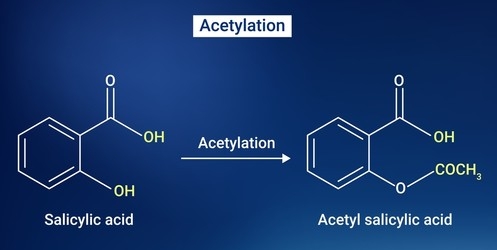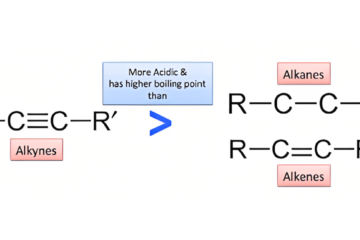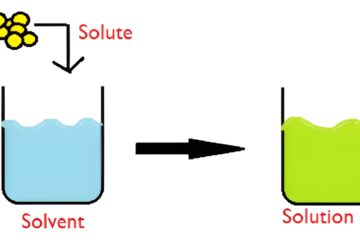Table of Contents
Delving into Acetylation: Key Mechanisms, Essential Reagents, and Noteworthy Applications
The Acetylation Process: A Quick Overview
Acetylation is a chemical process where an acetyl group, represented as CH3CO, gallantly replaces a hydrogen atom in a compound like an actor stepping in for a lead role. The reaction often involves compounds with free hydroxyl groups eagerly waiting to join the acetylation party. Upon substitution of a hydrogen atom sourced from an alcoholic group with an acetyl group, the outcome is a mesmerizing ester that leaves the audience spellbound. Ethanoylation, also known as acetylation, plays a pivotal role in the realm of chemical synthesis, acting as a brave protector for various functional groups, such as alcohols, phenols, thiols, and amines.
Acetylation Reagents and Catalysts: A Diverse Cast of Characters
Acetylation reactions typically summon acetic anhydride, acetyl chloride, or ketene as their magical reagents. These reactions often involve base catalysts, homogeneous or heterogeneous acid catalysts, or a harmonious combination of both. Among the numerous catalyzing agents commonly observed in different chemical transformations, we find remarkable characteristics such as zirconium oxide, boron-inclusive substances, triethylamine, and pyridine. Additionally, solid acid catalysts also join the acetylation ensemble. The speed of acetylation can be boosted by inviting a coenzyme known as 4-(dimethylamino)pyridine (DMAP) to the party, making it the life of the alkaline scene.
Acetylation in Action: From Aspirin Production to Amine Protection
One star-studded instance is the acetylation method that produces aspirin (acetylsalicylic acid) from salicylic acid. This reaction occurs in an acidic environment, typically concentrated sulfuric acid, which sets the stage for a breathtaking performance. The acetate ion from acetic anhydride forms a stable bond with the nucleophilic oxygen atom in salicylic acid, producing aspirin and acetic acid as the show-stopping finale.
Acetylation can also be exemplified by the interaction between amines and acetylating agents, like ethyl/butyl acetate or catalytic acetic acid. This process is commonly used in formamide formation at room temperature (20°C) and in the production of acetanilide from aniline. Acetylation acts as a guardian angel, making primary or secondary amines less reactive to oxidizing or electrophilic substances by attaching an acetyl-protecting group.
Acetylation’s Role in Gene Regulation and Disease Treatment
Acetylation plays a significant role in histone acetylation and deacetylation, which regulate DNA and other genetic components like a molecular maestro. These processes involve lysine residues in the N-terminal tail of the histone core and directly produce proteins for DNA copying and genetic material repair. Histone acetylation supports DNA transcription and has implications for cancer and autoimmune disease treatments, turning the tide in the battle against illnesses.
The Versatility of Acetylation: A Look at Various Applications
Acetylation’s versatility opens the door to several applications, such as:
N-terminal acetylation: A widespread protein alteration in eukaryotes, starring in protein synthesis.
Drug biotransformation: Acetylation helps transform many medications in the body, like a chemical superhero, creating effective molecules or breaking down chemicals for more straightforward elimination.
Histone acetylation: This process plays a role in gene regulation activities, treating autoimmune diseases, and fighting cancer like a molecular vigilante.
Acetyltransferases: These enzymes mediate different acetylation reactions and regulate cell protein formation, acting as cellular maestros.
The acquisition of an acetyl group should be distinguished from the procedure of incorporating an acyl group into a molecule. Setting aside their apparent linguistic similarity, they differ in methodology – while acetylation is achieved via the utilization of an acetylation agent to introduce the acetyl group onto another chemical species, the latter, known as acylation, introduces its distinctive functional unit through the use of acid halide as a reagent for this process. It’s like two chemists using different techniques to achieve their desired outcomes.
In conclusion, acetylation stands as a cornerstone in the realm of organic chemistry, akin to a superhero saving the day. It plays a vital function in creating numerous compounds and regulating genes; drug biotransformation relies on this fundamental process. Scientists can advance their knowledge by studying its mechanisms, reagents, and applications, leading them towards groundbreaking disease treatments while advancing molecular biology’s understanding. Acetylation, the unsung hero of the molecular world, continues to amaze and inspire with its versatile performance.
Check Our Chemistry Blog Here: Unravel the Secrets of Chemistry with Engaging Articles
Click Here to Dive Back into Our Educational Resources and Expand Your Knowledge Blog







